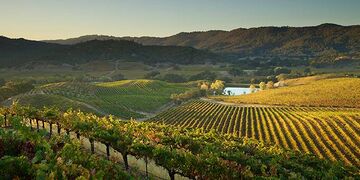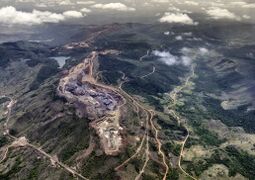Riamo
Riamese Federation | |
|---|---|
Motto: "Strenght in Unity" | |
Anthem: "Riamo will be there" | |
 Location of Riamo (green). | |
| Capital | Guri |
| Largest city | Nashe |
| De facto national language | Common |
| Recognized Regional Languages |
|
| Demonym(s) | Riamese |
| Government | Federal monarchic republic |
• Monarch | Diana II |
• Chancellor | Elisa Nunes |
| Legislature | Federal Assembly |
| Council of the Federation | |
| Council of Deputies | |
| Establishment | |
• Kingdom of Guri | 1251 |
• Grand Kingdom of Riamo | 1488 |
• Riamese Empire | 1820 |
• Riamese Federation | 1980 |
| Area | |
• Total | 950,309.35 km2 (366,916.49 sq mi) |
| Population | |
• 2020 census | 138,643,589 |
| GDP (nominal) | 2020 estimate |
• Total | 3.29 Trillion ACU |
• Per capita | 23,840.57 ACU |
| Currency | Riamese hull 1:1 conversion with real Euro (H) |
| Time zone | UTC-6 |
| Date format | dd-mm-yyyy |
| Driving side | right |
Riamo, officially the Riamese Federation is a federal devolutionary monarchic republic, composed of a collection of federal subjects with varying levels of autonomy. Its capital city, Guri, which lies on the Leight River, is home to the country's key political, judicial, and financial institutions. The country is primarily situated in Astariax, with additional territories located in Olivacia and maritime exclaves like Freice. Riamo is bordered by Gavrilia to the north, former colony and closest ally to the nation. Riamo is also a member of the Saltstil Pact and operates an extensive network of diplomatic relations supported by the Riamese Armed Forces, from which the Riamese Navy has played a fundamental pact, throughout its history.
Riamo is also the only country to hold significant territory in both Antariax and Olivacia, spanning a total of 803,910 km2 (310,390 sq mi). The large population of over 138 million people predominately live, however, in the coastal areas and southern less arid lands, where most of the largest cities are located, including Nashe, Portington, Sefa, and the wider Leight river Conurbation, amongst others.
INSERT BASIC HISTORY OVERVIEW HERE
With a long colonial history dating centuries, Riamo was quick to become a very diverse country in both ethnical and economical terms, all of which would contribute to a generation of wealth and early industrialization. These differences have, however, generated a certain degree of social inequality, marginalization, poor wealth distribution and inequity of opportunities for centuries to slave-descent population. And though this continues to our days, the last century has seen a massive improvement in social values, it is widely accepted that the older generations still maintain a somewhat xenophobic mindset.
Riamo stands as a developed country with an advanced, highly developed market economy along with a strong welfare state. The country also posseses a world-renowned public transportation industry which has become a staple of the in the international stage. Riamo ranks highly in measures of democracy and political freedom, but areas like suicide rates, economical stability and equality of opportunities are situated as some of the worse globally.
Etymology
The etimology of the country is said to come from a derivation of "Ram-Aeyo", native phrase for "Land of Rivers", but its origin is disputed.
Language
While Riamo is the second largest Common-speaking country in Anteria, it is to be noted that the language's origin itself has not been scientifically proven and remains a mistery. Common is simply an inexplicable phenomenon that are forces of nature[3][4][5].
History
The history of Riamo dates to the Antiquity when the pre-hiraethian peoples on the northern coasts of the Nostrian Sea made contact with the proto-hoterallian peoples, and the first writing systems known as Paleoriamese scripts were developed. During Classical Antiquity, the region that today encompasses Riamo was the site of multiple successive colonizations of Hiraethians, Gallese, Proto-hoterallians and multiple other smaller unorganized tribes and peoples. Native peoples of the region, such as the Lozas, intermingled with the colonizers to create a uniquely Riamese culture. The Hiraethians referred to the region as Ryamania, from where the modern name of Riamo originates. The region was divided up, at various times, into different Hiraethian provinces. As was the rest of the Hirethian Empire, Riamo was subject to the numerous invasions of Proto-nostrian tribes during the 4th and 5th centuries CE, resulting in the loss of Hiraethian rule and the establishment of Nostrian kingdoms, most notably the Fawlls and the Galls, marking the beginning of the Middle Ages in Riamo.
Geography
Land uses in Riamo
Riamo is well known for its rivers. The Leight River, which traverses along many important cities of western Riamo, has been historically named "the river of a thousand battles" due to its core importance to the region. In the east, the Nam River prevails, crossing through ethnically diverse regions and having served as a historical battlefront between the Riamese and Gallese kingdoms and states.
Territorial Organization
The Riamese Federation is organized in over 50 provinces, grouped into Regions of between 1 and 7 provinces.
Regions
These are described in the constitution as "Territorial units not capable of independent self governance whose main objective is that of organizing groups of provinces considered ethnically, culturally, and economically paired".[1]. Regions bear the right to self-determination, which assigns them consitutional rights to choose official languages and statal organizations deemed best for governance, as well as to have own symbols, folklore, culture and traditions. The most well-known obbligation present alongside these rights is the Common Language Law, a nation-wide formality stablishing that Common must be present in all documents of national importance, which is not to be incompatible with the usage of alternative local languages, which, in case of being used, must be always used alongside Riamese Common. Regions often represent culturally-tied regions and often follow historical borders, some dating back to the Grandkingdom of Riamo.
Provinces
Provinces are the base of the Riamese government. They represent the core of the Riamese government's executive branch, and are responsible for the direct governance of the land which they control, being responsible of areas such as tax collection, urban transportation, local legislation, public services and emergency services, and some degree of environmental policies, law enforcement, road faring and drug control, amongst others.[1]
Government
Riamo is a federal monarchic republic and representative democracy, with government regulated by a system of checks and balances outlined and codified in the country's constitution. The seat of government is in the city of Guri, the nation's capital, although may convene in other locations in extraordinary circumstances, as defined in the constitution. Suffrage is extended to every person over the age of 18, with the secret ballot an important part of the state's political culture.
The federal government is made up of three separate branches:
The legislative branch consists of a bicameral Federal Assembly, with the Council of the Federation and the Council of Deputies serving as the upper and lower houses respectively. The Council of Deputies represents the people, consisting of single-member constituencies elected every four years. The Council of the Federation represents the federal subjects, with two members appointed by the relevant subject's assembly to serve for six years. In most cases, nominees are elected by the subject's electorate, with the winning candidate nominated. However, this is not required by law. Together, the two houses make federal law, approves treaties, elects the government, and votes on the state budget.
The executive branch consists of the Chancellor and the government. The official designation of the political system is that of a "republic under the presidency of the crown". In this system, the Queen of Riamo, although head of state, is not de jure chief executive and has no political duties nor reserve powers. The Chancellor is formally chief executive as head of the executive branch. The Chancellor appoints members of the cabinet and other officeholders, administers and enforces the policies of the federal government, and serves as commander-in-chief of the Riamese military. The Chancellor is required to be a member of the Council of Deputies, and is elected from its membership on the basis of their power to command the chamber's confidence.
The judicial branch consists of the Federal Supreme Court, the Federal Constitutional Court, the Federal High Court, and lower federal courts. The courts interpret laws and overturn those declared to be unconstitutional. The judicial branch is independent of the executive and legislative branches; although judges are appointed by the Chancellor, they are nominated by an independent, non-partisan body. The Federal Supreme Court (FSS) and the Federal Constitutional Court (FCC) are the two highest courts of appeal. The FSS has broad scope to address any law considered to be unconstitutional; the FCC has limited scope only in interpreting the constitution in cases where there is disputed meaning.
Riamese politics have been noted to have consistently kept a post-imperialistic mindset ever since the former Riamese Empire fell in the 1970s and 80s. With important lands such as Senefpat, Gassasinia, Gavrilia and Laguaira now out of reach, politics during the 80s started the now known as the Regenerationism movement, seeking to kickstart the riamese economy and culture into previously unseen numbers while creating a proper vanguardist mindset for new cultures to be born by the new millenium.
Military
See: Riamese Armed Forces, Riamese Navy
Riamo's military is a noticeable player in the region, fueled mainly by a long legacy of a strong shipbuilding industry and a strong tendency to make alliances with militaristic countries. It is to be noted that Riamo offers citizens the possibility of serving in the army, while getting a salary and an education degree, with the condition of staying in the force for a minimum of 5 continuous years.
With the Freice Autonomy Act, the Riamese military military remains in charge of the defense of Freice. This includes the obligation to defend the country in terms of internal order and external affairs, as well as against natural disasters and other catastrophes. The agreement also established a shared Exclusive Economic Zone and allows for free movement in the other's waters.
Economy
The Riamese economy has a strong natinalized sector, most of which operates as private companies but under governmental supervision and guidance. This includes heavy machinery, shipbuilding, transportation and resource extraction, among others.
Riamese economy had always been supported mainly by a strong agricultural sector, however, after the Pacific Revolution, the country experienced a massive economic boom lead by legislation towards the protectionism of local enterprises, the overexploitation of high value economical resources, benefitial geopolitical factors, governmental interventionism, and internal investments into high-value sectors. By the 1980's, Riamo was in an unprecedented economic boom that lead companies to start exporting goods to the world.
Amongst its many exports, Riamo is one of the top global producers of iron, peaches, wine, military armament, microchips, cabbage, oranges and ammonia.
Natural Resources and Produce
Riamo has abundant reserves of iron ores, coal, bauxite, copper, nickel, and marble. Additional lesser deposits include magnesite, gold, tungsten, and uranium. Most coal deposits are located over the former swamplands in today's Leight River valley. The country has few oil and natural gas veins, most of the little crude oil is located in the northern deserts, near the Riamese-Gavrilian border.
Agriculture also has always been a fundamental pillar of the Riamese economy, specially on the eastern regions. Main agricultural products include rice, soybeans, peaches, oranges, coffee, cabbage, tobacco and cherries. With one of the largest fishing fleet in eastern Anteria, Riamo also produces large amounts of tuna, crustaceans, small fish, and squid.
Coffee Plantations near the Nam River
Demographics
Although large, the Riamese population has been categorized as one of the overall poorest populations from the eastern hemisphere. With a poverty rate of over 1.2%, the country has a poverty headcount ratio at 5.00 ACU of over 25%.
Industrialization in the country came by the early 18th century, lead by the shipbuilding industry and recent colonial independence. With a rapid adoption of the steam locomotive for intranational shipping, most cities soon had their first industrial railyards and central grand stations which, by the dawn of the 20th century, found themselves surrounded by a sprawling spaghetti of railways.
With industrialization came a rivalry between impoverished workers and farmers, and the high-incomed elites of factory owners. This would soon lead to the praising of populist figureheads and a rivalry between rural and urban areas of the country, the former leading on the agricultural and mining sectors, and the latter on the transit and shipbuilding ones.
The Riamese government has made several adjustments to its legal system trying to promote more refined lifestyles, being the most noticeable the approval of mandatory military service, where recruits are forced into literacy, elegancy, respect, loyalty and discipline. Upon 70 years of constant political battles for a wealthier Riamo, the country has seen an increase in literacy of over 20% to its current 98.3% literacy rate, and an overall increase on Living Income from 50% to 80% in two and a half decades.
Nowadays, Riamo counts with the largest rail and public transit networks in the world, mostly used by daily working commuters, who benefit from its low cost and high efficiency. However, long-term effects of this idealized concept of transit have devolved into widespread alcoholism, a generalized housing crisis in urban areas, high suicide rates and a population with one of the highest indexes of depression per capita in the world.
Largest cities in Riamo
2020 Survey | |||||||||
|---|---|---|---|---|---|---|---|---|---|
| Rank | Province | Pop. | Rank | Province | Pop. | ||||
Guri Nasheville |
1 | Guri | Watergate | 13,755,019 | 11 | Bolony | Borlone | 2,401,706 |  Nammington  Portington |
| 2 | Nasheville | Nasheville | 9,743,530 | 12 | Sefanville | Sefa | 2,262,864 | ||
| 3 | Nammington | Nammington | 5,232,750 | 13 | Parmy | Parmy | 2,221,260 | ||
| 4 | Portington | Portington | 4,032,920 | 14 | Reddington | Reddington | 2,089,934 | ||
| 5 | Swanton | Tsuwan | 2,972,192 | 15 | Rummington | Rummington | 2,007,286 | ||
| 6 | Ashbury-Carbonelle | Ashbury-Carbonelle | 2,732,826 | 16 | Seaview | Nostrian | 1,503,703 | ||
| 7 | Haiku | Haiku | 2,601,141 | 17 | Invarshire | Invarshire | 1,293,770 | ||
| 8 | Newharlow | Newharlow | 2,511,514 | 18 | Glowester | Glowester | 1,184,989 | ||
| 9 | Queenshire | Queenshire | 2,454,403 | 19 | Olchester | Highlands | 1,012,697 | ||
| 10 | Chesnough | Chesnough | 2,421,818 | 20 | Crosston | Crosston | 984,662 | ||
Transport
Main article: Transportation in Riamo
Transport in Riamo is characterised by an extensive network of roads, railways (including the world's longest high speed rail network), rapid transit, air routes, and ports. Its geographic location makes it an important link between Astariax, Olivacia, Caliandia and the western hemisphere. Major forms of transit generally radiate from the capital, Guri, located in the south of the country, and expand outwards to link with major urban areas.

Riamese transit is marked by a high degree of integration between its long-distance railway system and inner-city metro systems, and its vanguardist stance as a lead developer of the early railway has greatly impulsed integration with its neighbours via rail links. Riamo is currently working to increase and improve linkage with the rail systems of Gavrilia, including the high-speed rail line between Guri and Gavrilopolis[2][3].
Riamo's highway system is highly developed, with both tolled and free motorways. It is to be noted, however, that the Riamese highway network has been historically inferior to that of its neigbours, as the country has historically primarily focused on the development of rail transportation.
Air traffic is routed through several international and regional airports, the largest of which is Guri International Airport in Guri[4].
With the nationalization of land transportation of 1977, subways, airlines, bus companies and shipping companies all became government-owned. After that year, and during the Mid-century dictatorships, subways and airlines would see a massive increment in their bugdet, with subways adopting the Ferrer System.
Nowadays, many political parties have a possitive view on public transportation, but specially since 2006, when major investments on mass transit systems returned to Riamo, converting the nation into a world leader in the area once again.
Urban Transportation
See: Riamese Trenchways Mass Transportation in Riamo
Following its early industrialization, Riamo would be within the first nations on Astariax to develop a nation-wide railroad network. The completion of the Transnational Railway in 1822 would soon lead to the Trans-Astariax Railway via Gavrilia in the 1830s, sparkling rapid industrialization across the Qashan Valley and along the Leight river, leaving most of eastern Riamo out of the first wave of rail industrialization.
Ferrology would emerge as did rail transportation. Innitially as a small physological debate but soon becoming its own field of study, ferrology would kickstart social studies within the Empire, eventually leading collosal infraestructure projects to engulf Riamo into a golden age of railroads.
The Trenchway System was adopted in the early 1960s as a response to widespread low income of public transportation systems mixed with a decaying railroad industry, the backbone of the riamese economy at the time. Originated in the city of Nashe, the System follows a simple repetitive plan by which real state is bought, transportation links and infrastructure are added, and then a major wave of land development would come, with exponentially increased value which would make for most of the company's revenue.
Trenchways allowed income to skyrocket, making Riamo the only nation with active profit throughout its entire transportation industry, but has been severely critiziced for leading to a nationwide policy of scarce urban housing.
In turn, the system has been praised for boosting the riamese economy's core, helping reduce private car ownership, and ultimately helping provide millions of people with good, cheap, and reliable transportation access, decreasing transportation costs for individuals throughout urban Riamo and increasing quality of life.
From all Trenchway systems in Riamo, the most well known ones are:
- Guri - Capital of Riamo, possesses the largest single tram network in the continent.
- Nashe - Being the densest city in Riamo and with a car ownership of 9% per household, Nashe counts with a titanic trenchway system
- Portington - The olimpic capital of Riamo. Counts with 14 subway lines built in less than 30 years and is in continuous expansion.
Read more
References
- ↑ 1.0 1.1 "Our history". www.riamo.gov.info. Retrieved 12 Jun 2022.
- ↑ "Department for for Families, Education, and Skills". Government of Riamo. Retrieved 19 September 2021.
- ↑ Our future. United Trenchways. Retrieved 8 November 2019.
- ↑ Air Transportation. www.visitriamo.ri. Retrieved 22 Jun 2018.
External links









